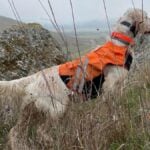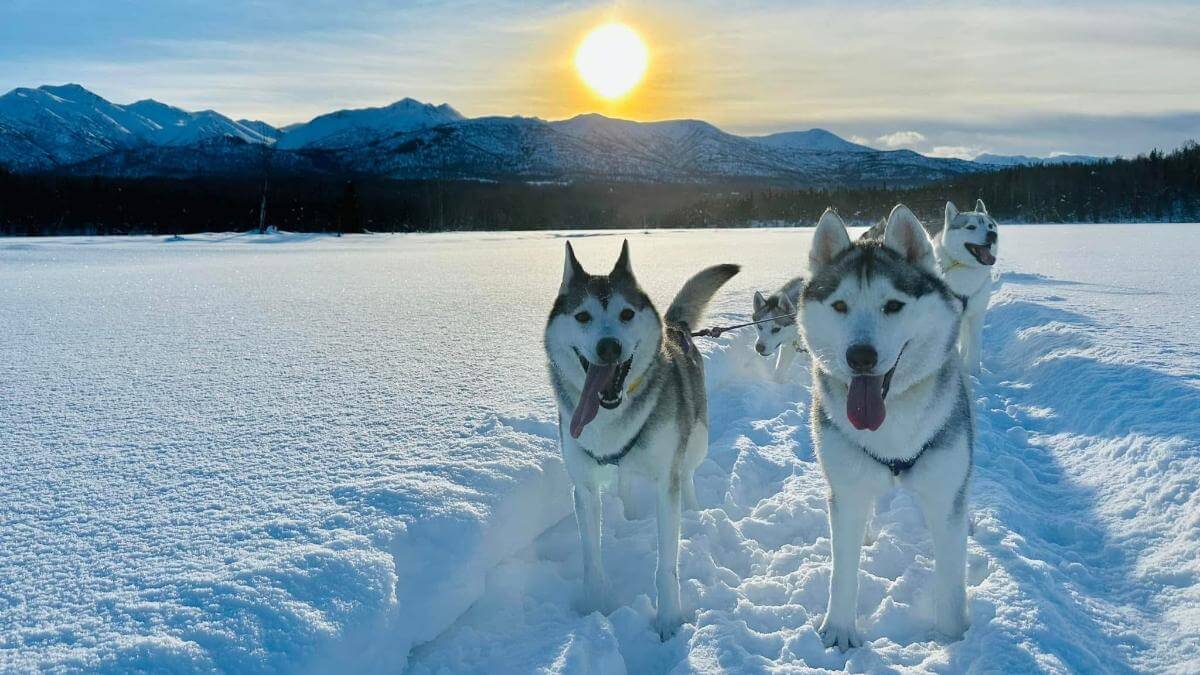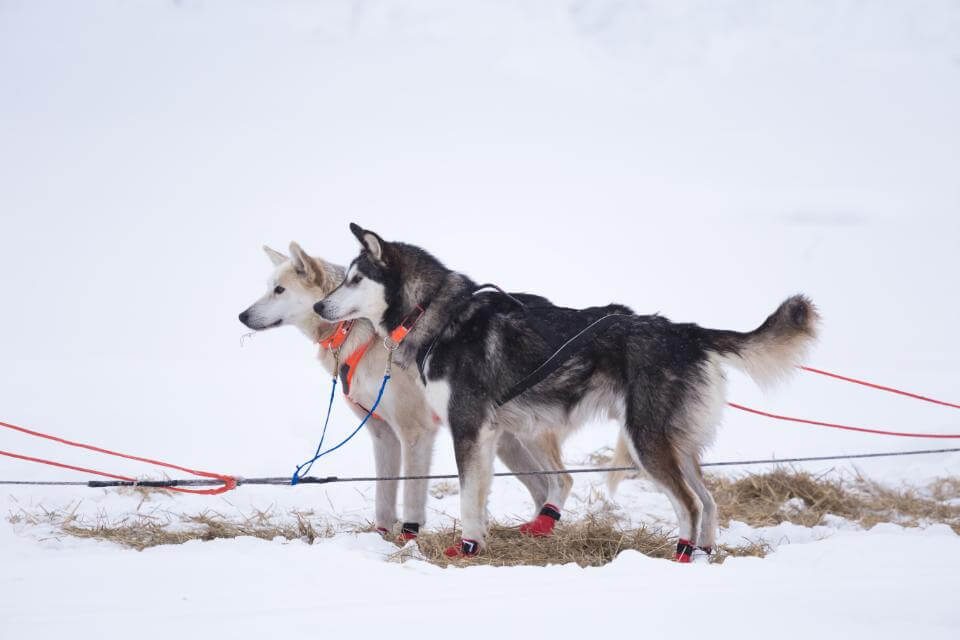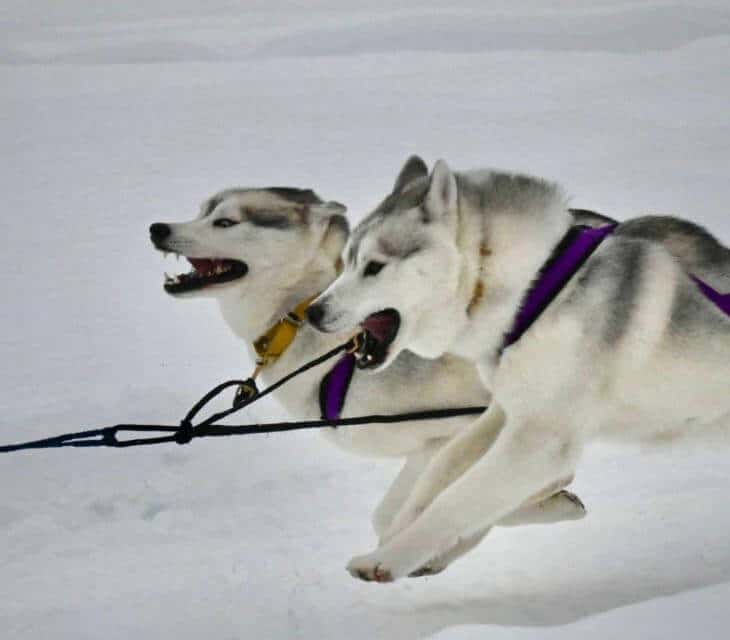
Home » Husky Hype: Thoughts on Racing with Siberian vs. Alaskan Huskies

Not all of the dogs we know as “huskies” are truly the same. In fact, one of the biggest misunderstandings is the difference between the Siberian Husky and the Alaskan Husky. These two sled dogs are not the same, and one is not recognized by the AKC as a distinct breed.
We recently caught up with Siberian Husky breeder and veterinarian, Kevin Snyder, on the subject of huskies. Kevin and his wife, Mara Snyder, live in Palmer, Alaska, and got their first Siberian named “Ara” in 2010. And they have been hooked ever since. Kevin says that when they were first getting started in sled dog racing, they did all of their homework and connected with multiple experienced mushers. Those connections ranged from meeting purebred Siberian Huskies to Alaskan Huskies, and even beyond that.
“We sought mentorship from mushers in every racing discipline, sprint, middle, and distance mushers, with every different style of running dog, purebred teams, Alaskan Huskies, Euro Hounds,” Kevin says. “Every person, every dog, every trail, presented us with something new to learn. Which brings us back to the question with regards to the primary differences between Alaskan Huskies and Siberian Huskies.”
Kevin describes the stark differences between Siberian and Alaskan Huskies, much of which comes down to the fact that the Siberian Husky is AKC recognized with a written Breed Standard. The Alaskan Husky, which is essentially a combination of breeds that have formed a unique genetic signature, has a lot of variation, and different dogs known as “Alaskan Huskies” may have very different breeds in their background.
He says that he believes the general public does not always realize the two breeds are not the same, and Hollywood has something to do with that. Practically every sled dog in the movies is a Siberian Husky, but that doesn’t fully align with reality at all.
“Hollywood has identified the Siberian Husky as the quintessential sled dog, whilst some of your top canine athletes in the mushing world are in fact Alaskan Huskies or hounds, and not Siberian Huskies at all,” he emphasizes. “The Hollywood stereotype is perpetuated in marketing materials that lead new people to mushing, whether spectating or starting in the sport, thinking that every sled dog is a Siberian.”

The Alaskan Huskies, not so commonly portrayed, have a different backstory.
“Alaskan Huskies are descendants from a variety of different breeds and are the result of efforts by dog mushers and breeders to maximize racing performance,” Kevin explains. “The Alaskans are more variable in size/appearance, structure, movement, and other traits as you move from one kennel to the next, while the Siberian Husky has an identifiable breed type.”
It goes beyond the phenotypical differences as well.
“There are physiological [differences] as well as differences in temperament that become increasingly observable when one trains, works, and races alongside both Siberian Husky and Alaskan Husky dog teams,” Kevin reports. “The purposeful breeding that has gone into creating the Alaskan Husky has produced a working dog with speed and a will to run that is testament to the success of the Alaskan Husky in the long distance mushing world.”
He also says that Alaskan Huskies typically have higher energy needs, which go hand in hand with those efforts to increase speed and endurance through deliberate breeding and incorporation of other breeds. With this, Alaskan Huskies usually also have a higher metabolism and must be fed greater amounts of food.
“Alaskan Huskies are like a modern sports car with a ‘bigger engine,’ but that also requires more ‘gasoline’ to feed it,” Kevin suggests. “The Siberian Husky is designed for efficient travel in an Arctic environment over long distances. They retain heat, with veins that sit deep in the muscle tissue, have a thick, dense, Arctic double coat, thick tough paw pads, almond-shaped eyes, and well-furred ears. They typically have slower metabolisms, requiring less food.”

While both are incredibly different, Snyder says there is no superior sled dog.
“The performance of the dogs in harness ultimately depends on the goals of the musher, and those outside factors that influence a dog’s performance in harness,” Kevin notes. “If your goal is to hit top speeds over short distances on a hard-packed, groomed trail, then the modern Euro hound may be your dog. If your goal is to run a team of dogs over longer distances with limited resources, then the Siberian Husky or Malamute may be your dog.”
For long distance races, there may be a different option selected in terms of the breed utilized.
According to Kevin, “If you want to race for the win in a long-distance sled race like the Iditarod, getting Anchorage to Nome in the shortest time possible, then the Alaskan Husky would be your dog. Dogs are amazing athletes and there are superstars in every discipline.”
At the end of the day, the “weakest link” when it comes to racing, and the dogs that are chosen for the team, has nothing to do with a dog at all.
“I’ve been fortunate to be able to interact with different sprint and longer distance kennels across the state that have top dogs and, in my opinion, they are all incredible,” Kevin reveals. “Superior working dogs teach you quickly that we, the humans hitching the ride on the sled, are the weakest link.”
